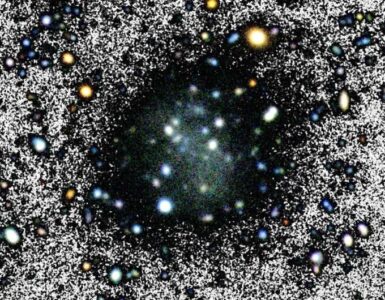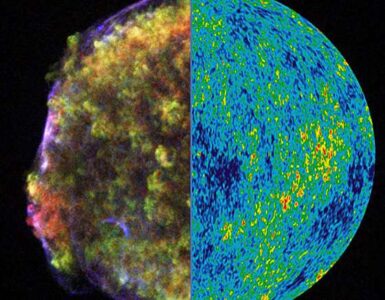Scientists have found traces of phosphorus, a fundamental ingredient for life, in ice grains spewed into space by Enceladus, one of Saturn’s moons.
Enceladus is a tiny (310-mile-wide, or 500-kilometer-wide) moon orbiting Saturn, the great ringed gas giant of our solar system. It’s less wide than the United Kingdom, but Enceladus is of outsized interest to astrobiologists because of its subsurface ocean, which lies beneath its icy crust.
Now researchers have found signs of a rare element crucial for life’s existence being expelled from within the moon’s waters. The team’s research was published this week in Nature.
Life as we know it needs water, so signs of water—whether in dried-up layers in Martian craters or actively sloshing around beneath the surfaces of craggy moons—are worthy of scientific investigation.
It makes Enceladus, as well as other oceanic satellites like Jupiter’s moon Europa, of utmost importance in humankind’s search for life beyond Earth. Even if signs of life don’t turn up in missions investigating subsurface oceans, their absence could help scientists home in on what circumstances give rise to life.
The phosphorus turned up in data from the Cassini spacecraft, whose 20-year mission ended in 2017, when the spacecraft spectacularly plunged into Saturn. Cassini observed Enceladus on its tour of the Saturnian system, and saw the moon erupting, spewing large plumes of water through cracks in its icy surface.
The water plumes weren’t seen by Cassini alone. Just last month, the Webb Space Telescope spotted a water plume more than 6,000 miles long (9,656 km), or more than 20 times the size of Enceladus itself, ejected from the moon. There was “water absolutely everywhere,” one scientist who studied the plume said, and that water either stayed in the vicinity of Enceladus or fed Saturn’s ring system.
The recent team of researchers investigated data from Cassini’s Cosmic Dust Analyzer, which sampled ice grains spewed by Enceladus that made their way into Saturn’s E ring.
“Webb provides a unique way to directly measure how water evolves and changes over time across Enceladus’ immense plume, and as we see here, we will even make new discoveries and learn more about the composition of the underlying ocean,” said Stefanie Milam, a a planetary scientist at NASA Goddard and a co-author of the paper documenting the plume spotted by Webb, in a Space Telescope Science Institute release at the time.
Cassini also flew through Enceleadus’ plumes during its tenure, and previously detected organic compounds including amino acids. The phosphorus detection is more intriguing, though, as the element is the least abundant of those necessary for biological processes, according to a NASA Jet Propulsion Laboratory release, and is a building block of DNA — the molecule that contains our genetic code.
Read more at Gizmodo.com
photo









